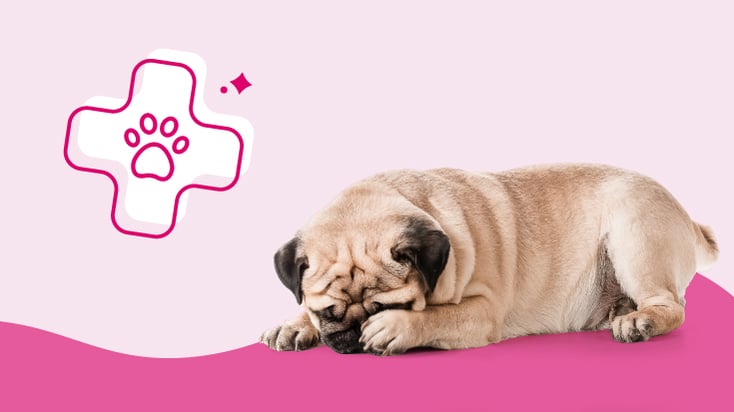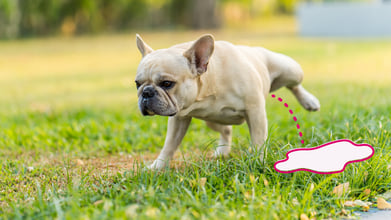11 Signs Your Pet Needs to See a Vet

Table of Contents
1. Sudden Changes in Diet
2. Lethargy or Decreased Activity
3. Excessive Scratching or Skin Changes
4. Sudden Hyperactivity
5. Changes in Oral Health
6. Changes in Bathroom Behavior
7. Unexplained Weight Loss
8. Excessive Thirst
9. Visible Lumps or Growth
10. Excessive Panting
11. Excessive Sneezing
When to Seek Veterinary Care
Have you ever noticed a change in your pet that left you worrying? Our furry friends communicate in ways we might not always recognize immediately.
However, if your pet is experiencing any of the following symptoms: trouble breathing, signs of severe pain (like shaking, panting, hiding, or agitation), seizures or loss of consciousness, significant wounds or injuries, ingestion of toxic foods, substances, or foreign objects, or sudden mobility issues, it's time for an immediate trip to the emergency veterinary clinic.
Aside from these urgent symptoms, there are other subtle cues that suggest a visit for a medical checkup.
Here are 10 signs your pet should see a veterinarian:
1. Sudden Changes in Diet
Has your pet been avoiding meals or not showing the same enthusiasm for food lately? It might be more than them just not liking their food. Dental problems, digestive issues, infections, or internal organ abnormalities could be the culprits.
A consistent change in appetite might lead to weight issues or nutritional deficiencies. This isn't only common in older pets—any age can be affected. A veterinarian might suggest some dental care, diet adjustments, or other specific treatments to help them out.
2. Lethargy or Decreased Activity
If your pet's usual playful energy seems a bit lower lately, it might be a sign to take note. Occasional tiredness is okay, but consistent lethargy could indicate underlying health issues like anemia, pain, or illness.
This doesn't just alter their playtime; it can also impact their overall health. While senior pets might naturally slow down, it's also worth observing younger ones. Solutions range from rest to specific medical interventions.
3. Excessive Scratching or Skin Changes
If your pet's constantly scratching, licking, or biting themselves, it could be an allergic itch. Skin issues can stem from allergies, parasites like fleas and ticks, or fungal infections. You might also notice bald patches, redness, or bumps.
Such conditions can be uncomfortable and lead to secondary infections. Treatments can vary from flea medications, antimicrobial shampoos, to allergy-specific therapies.
4. Sudden Hyperactivity
Has your pet started dashing around more than their usual pace? Unexpected hyperactivity in pets can hint at various underlying issues. It might be a reaction to discomfort from a stomach upset, an itch due to an irritant in their fur, or even hormonal imbalances that affect their behavior.
Diet changes can also play a role in their sudden zest. While it's wise to consider any recent changes in their surroundings, if this elevated energy continues and you can't identify a clear cause, a visit to the veterinarian is the next step to ensure your pet's overall well-being.
5. Changes in Oral Health
Our pets' dental health often flies under the radar, but it's just as important as any other aspect of their well-being. Bad breath, tartar build-up, or a sudden reluctance to chew might hint at underlying dental problems.
Regularly inspecting their teeth and gums for signs of yellowing, breakage, or gingival inflammation can help catch issues early. And while occasional bad breath is normal, constant foul odors might be a red flag. Keeping up with dental checkups ensures your pet's mouth stays healthy and pain-free.
6. Changes in Bathroom Behavior
Noticing shifts in your pet's bathroom habits? Diarrhea or runny stools can indicate food sensitivities, infections, or digestive concerns.
On the other hand, variations in urine, such as color changes, increased or decreased frequency, as well as the presence of blood, can suggest urinary tract issues or kidney problems. If your typically house-trained pet suddenly starts having accidents indoors, it's another red flag. These signs are your pet's way of signaling something's off.
A veterinary checkup might involve tests like a stool analysis, urinalysis, or even imaging like X-rays. From there, it could be as simple as changing their diet or starting some medications.
7. Unexplained Weight Loss
If your pet seems to be losing weight unexpectedly, it's important to let your veterinarian know. Causes could span from digestive disorders to more alarming conditions like cancer.
Beyond the clear-cut weight loss, this can also affect their energy levels and immune defenses. While this issue isn't age-specific, it tends to be more prevalent in older pets. A trip to the veterinarian might include bloodwork, imaging, medical therapies, and dietary modifications.
🐱 Why is My Cat Losing Weight?
🐶 Why is My Dog Losing Weight?
8. Excessive Thirst
If you're refilling your pet's water bowl more often than before, it's a sign that shouldn't be overlooked. Excessive thirst can hint at conditions like diabetes, kidney issues, or hormonal imbalances.
1. Has your dog experienced rapid weight loss?
2. Has your dog’s appetite increased or decreased?
3. Is your dog more thirsty than usual?
4. Is your dog urinating more frequently than usual?
5. Is your dog less active than usual?
6. Does your dog have cloudy eyes or is experiencing vision problems?
7. Is your dog experiencing frequent urinary tract infections?
8. Does your dog have sweet-smelling breath?
9. Does your dog seem more lethargic than usual?
10. Does your dog have a family history of diabetes?
11. Is your dog's coat dull or thinning?
12. Has your dog had frequent skin infections?
1. Is your cat urinating more frequently than usual?
2. Is your cat more thirsty than usual?
3. Has your cat experienced rapid weight loss?
4. Is your cat showing signs of muscle weakness?
5. Has your cat’s appetite increased or decreased?
6. Does your cat seem more lethargic than usual?
7. Is your cat vomiting more than usual?
View Results
Beyond drinking more than usual, you might also notice them making frequent trips to relieve themselves. Consulting with a veterinarian is the first step. Treatments could involve diet modifications, medications to address specific conditions, or hydration strategies to ensure they remain well-hydrated.
9. Visible Lumps or Growth
Finding an unexpected lump on your pet can be alarming. However, they can range from harmless cysts to more concerning growths. Depending on the type and location, these lumps can merely be cosmetic or indicate deeper issues. They tend to appear more frequently in older pets, but a regular check is good for pets of all ages.
Based on the veterinarian’s findings, the next steps could include monitoring, diagnostic procedures like biopsies and diagnostic imaging, or more proactive treatments.
10. Excessive Panting
Seeing your pet pant occasionally isn't usually a cause for alarm. However, if you notice they're panting excessively, especially in cooler conditions or at rest, it could indicate stress, overheating, or even underlying health issues.
While it's not always an immediate emergency, consistently observing these behaviors should prompt a check-in with your veterinarian to get to the root of the issue.
🐶 Common Reasons for Excessive Panting in Dogs
11. Excessive Sneezing
Just like humans, pets sneeze as well. However, frequent sneezing might be a sign of respiratory irritation, allergies, or a potential infection.
Depending on the root cause of sneezing, it could be a cause for concern. A pet who's interacted with known allergens like dust or pollen doesn't necessarily indicate a problem, but if they're sneezing excessively you might want to chat with a veterinarian.
When to Seek Veterinary Care
The first step is to recognize a sign or shift in your pet's behavior. The key lies in taking prompt action. If you notice any unusual behaviors, even if they seem minor, it's essential to document what you've observed – sudden lethargy, excessive thirst, or visible growths.
While the instinct to 'wait and see' might be strong, remember that some conditions can progress quickly. So, don’t delay.
Contact your veterinarian, describe the symptoms, and seek their guidance. They might reassure you, recommend a checkup, or advise on specific care steps.
Should My Pet Be Seen by a Veterinarian?
1. Have you noticed changes in your pet’s appetite?
2. Does your pet have diarrhea or loose stools?
3. Have you noticed changes in your pet’s thirst/water consumption?
4. Is your pet having accidents in the house?
5. Is your pet pacing and unable to settle?
6. Is your pet panting more than usual?
7. Is your pet whining or vocalizing more than usual?
8. Is your pet shaking more than usual?
9. Is your pet hiding or avoiding physical contact more than usual?
10. Is your pet more lethargic and sleeping more than usual?
11. Are you concerned about changes in your pet’s behavior?
12. Is your pet scratching their ears?
13. Is your pet licking their paws more than usual?
14. Does your pet have a rash?
15. Is your pet moving more slowly than usual or having a harder time getting up or down?
View Results
Should My Pet Be Seen by a Veterinarian?
1. Have you noticed changes in your pet’s appetite?
2. Does your pet have diarrhea or loose stools?
3. Have you noticed changes in your pet’s thirst/water consumption?
4. Is your pet having accidents in the house?
5. Is your pet pacing and unable to settle?
6. Is your pet panting more than usual?
7. Is your pet whining or vocalizing more than usual?
8. Is your pet shaking more than usual?
9. Is your pet hiding or avoiding physical contact more than usual?
10. Is your pet more lethargic and sleeping more than usual?
11. Are you concerned about changes in your pet’s behavior?
12. Is your pet scratching their ears?
13. Is your pet licking their paws more than usual?
14. Does your pet have a rash?
15. Is your pet moving more slowly than usual or having a harder time getting up or down?
Share Quiz
Conclusion
Being a great pet parent is all about noticing the little things. Those small changes? They matter. Regular veterinary checkups are a game-changer in keeping our furry pals happy and healthy. If something feels off, or even if it’s just time for a routine check, why wait?
Schedule a home vet visit now and ensure your pet gets the best care right at your doorstep.
Is Your Pet Feeling Under the Weather?
Get the care your pet needs without leaving home. We have same-day appointments in most locations when it can’t wait.






